Bathrooms
Transform your bathroom into a space that’s as stylish as it is functional. From showers and tubs to fixtures and finishes, Renuity offers expert...
Transform your bathroom into a space that’s as stylish as it is functional. From showers and tubs to fixtures and finishes, Renuity offers expert...
Soak away the day in a new bathtub and say goodbye to that dingy old tub you never use! Our one-day bath installs will have you enjoying bubble baths...
Step into a modern, spa-like shower with a custom remodel from Renuity—expertly installed, beautifully designed, and built to last.
Renuity's walk-in showers offer an open, streamlined bathing layout that improves maneuverability and reduces the need to step over a tall tub edge....
Renuity offers walk-in tubs that provide a stable bathing environment for people who value comfort and accessibility. These designs work well for...
Discover customizable KOHLER® LuxStone® showers crafted from crushed stone and engineered for timeless elegance, strength, and everyday comfort.
Upgrade your tub to a sleek, modern shower with Renuity—customized for your space, expertly installed, and built for everyday comfort.
Soak safely in a Kohler walk-in bath—designed for comfort, accessibility, and spa-like relaxation, all installed by the experts at Renuity.
Boost curb appeal and energy efficiency with high-quality replacement windows. Renuity installs durable, stylish options that are built to last.
Renuity installs custom awning windows that frame your outdoor scenery while enhancing natural light and insulation. With sleek designs, durable...
Renuity specializes in custom bay window installation and replacement, delivering timeless style, energy efficiency, and added interior space. Our...
Renuity installs custom bow windows that expand your view, brighten your space, and improve energy efficiency. With durable materials and expert...
Renuity installs high-quality casement windows that combine sleek design, easy operation, and energy efficiency. With expert installation and...
Renuity installs high-quality double-hung windows that combine traditional charm with advanced energy efficiency. With dual operable sashes,...
Renuity provides ENERGY STAR®-rated replacement windows that improve insulation, reduce drafts, and lower utility bills. With multi-pane glass,...
Fixed and architectural shape windows by Renuity create focal points that influence both curb appeal and interior character. These non-operable...
Renuity installs durable, energy-efficient garden windows that extend outward to create a mini greenhouse effect. Ideal for kitchens, they add...
Renuity installs custom hopper windows designed to fit compact areas while delivering superior ventilation, energy efficiency, and security. Perfect...
Designed for homes in storm-prone regions, these hurricane windows feature laminated impact glass and reinforced vinyl frames that hold strong...
Renuity’s impact windows are designed to perform in the toughest conditions—offering the same level of protection trusted in hurricane zones...
Renuity installs custom picture windows that frame your outdoor scenery while enhancing natural light and insulation. With sleek designs, durable...
Single hung windows offer a simple, durable design that works well in a wide range of homes. Many shoppers researching Renuity's single hung windows...
Renuity installs custom slider windows that frame your outdoor scenery while enhancing natural light and insulation. With sleek designs, durable...
Renuity installs premium vinyl windows built for durability, insulation, and low maintenance. Designed to resist warping, rotting, and fading, our...
Make a lasting first impression with expertly crafted entry, patio, and interior doors. Renuity installs doors that combine security, efficiency, and...
Renuity offers a wide selection of entry doors, including wood, fiberglass, and steel options. With expert installation and customizable designs, our...
Renuity offers a wide selection of patio doors, including elegant French doors and modern sliding glass designs. With expert installation and premium...
Renuity offers sliding doors that bring modern design, space efficiency, and energy performance to any home. Built from durable, low-maintenance...
Renuity's hurricane doors are built to keep wind, rain, and debris out, and to stay shut when pressure changes during a storm. Our choices balance...
Renuity offers impact doors designed to defend homes against high winds, heavy rain, and airborne debris without sacrificing beauty or comfort....
Renuity’s French doors are engineered to deliver lasting performance without sacrificing the timeless aesthetic that makes this style a favorite...
Renuity offers custom front, patio, and exterior doors tailored to your design preferences and functional needs. With premium materials and expert...
Bring new life to your kitchen with updates that balance beauty and practicality. From cabinets to countertops, Renuity makes it easy to refresh the...
Renuity specializes in kitchen cabinet refacing that delivers a brand-new look in just days. By replacing doors, drawer fronts, and finishes while...
Renuity provides professional cabinet refacing and installation services that transform your kitchen with minimal disruption. Our expert team ensures...
Upgrade your storage with custom closets designed to maximize space and match your style. Renuity creates smart, functional solutions for every room...
Renuity designs and installs custom closet organizer systems that make storage simple and stylish. With adjustable shelving, custom drawers, and...
Renuity designs kids’ closets that make staying organized simple and fun. With adjustable shelving, built-in bins, and durable finishes, our custom...
Renuity designs custom reach-in closet systems that make the most of every inch. With adjustable shelving, integrated hanging rods, and sleek...
Renuity creates custom walk-in closets that balance style and functionality. With adjustable shelving, custom cabinetry, and premium features, our...
Renuity creates custom wardrobe closets with cabinets, drawers, and shelving designed to maximize storage and elevate your bedroom’s style. With...
Protect and refresh your home surfaces with durable floor and garage coatings. Renuity delivers long-lasting performance with a sleek, modern finish.
Renuity specializes in polyurea garage floor coatings that are 20x stronger than epoxy, slip-resistant, and built to last. With fast installation and...
Renuity’s basement floor coatings combine strength, style, and moisture resistance for a space that’s built to last. With customizable designs...
Renuity’s patio and walkway coatings combine durability, safety, and style to keep your outdoor spaces looking fresh and functional. With...
Declutter and organize every corner of your home with customized storage systems. Renuity offers solutions that make your daily life easier and more...
Renuity designs and installs garage storage systems that keep your space organized, efficient, and clutter-free. From shelves and cabinets to...
Renuity designs custom home office systems that blend style, storage, and functionality. From built-in desks to tailored shelving, our solutions help...
Renuity creates custom laundry room storage systems that keep your space organized and efficient. From built-in cabinets to adjustable shelving and...
Renuity designs and installs custom media centers that keep your entertainment area organized and stylish. From built-in wall units to storage-rich...
Renuity designs custom mudroom storage systems that combine style and function. From built-in benches to adjustable shelving and cubbies, our...
Renuity creates custom reach-in pantry systems that keep your kitchen organized and functional. With adjustable shelving, pull-out drawers, and...
Upgrade your walk-in pantry with tailored designs that combine style, organization, and convenience.
Renuity offers custom Murphy beds that transform any room into a multi-functional space. From wall beds with desks or shelves to sleek cabinet...
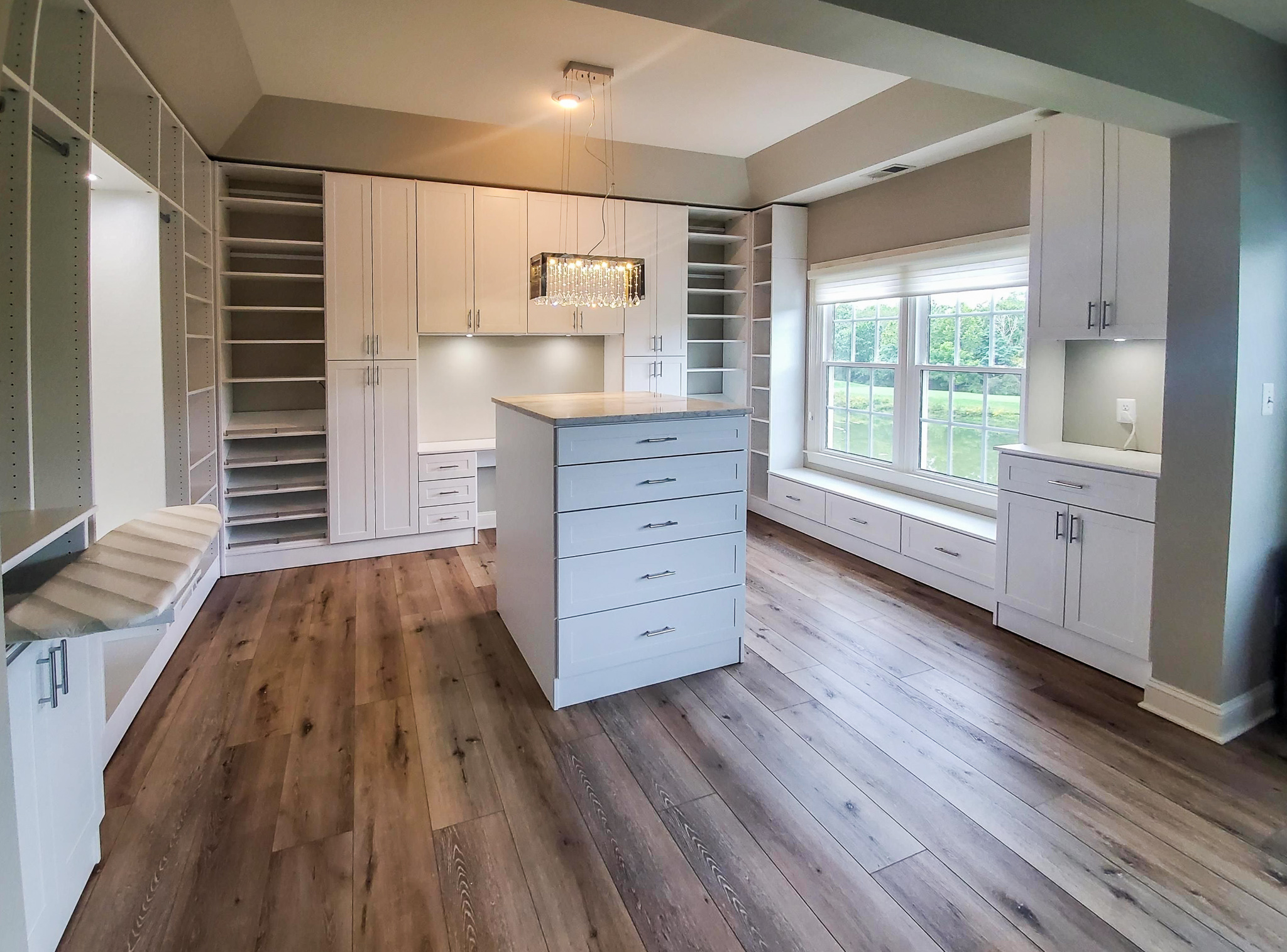
No Interest, No Payments for 12 months on Select Products

Bulk buying feels great!
Fewer trips, better unit prices, a pantry that actually keeps up with the way your family eats. Then the haul hits the kitchen, and reality sets in: cases of sparkling water with nowhere to go, snack multipacks toppling off deep shelves, three jars of pasta sauce hiding behind paper towels you forgot you owned. If your Costco or Sam’s Club run looks perfect in the cart but impossible at home, you are not alone.
This guide turns that chaos into a simple, repeatable system built for bulk food storage. We will map zones for daily use versus overflow, show containers and shelving that keep labels visible, and outline a quick rotation routine that prevents waste. Along the way, you will see how a few smart upgrades (like Renuity’s custom walk-in and reach-in pantries!) can turn Costco and Sam’s Club food storage into an organized, low-maintenance pantry that actually saves you time.
Clutter usually starts when backstock creeps onto the same shelf as everyday staples, duplicates vanish into deep shelves, and heavy cases sit on undersized racks. Park unopened cases in an overflow zone, keep week-to-week items at eye level with front-facing labels, and size shelves to the tallest packages you actually bring home.
Whether you’re planning Costco food storage or Sam’s Club food storage, design the pantry around how your family eats, not how warehouse clubs bundle products.
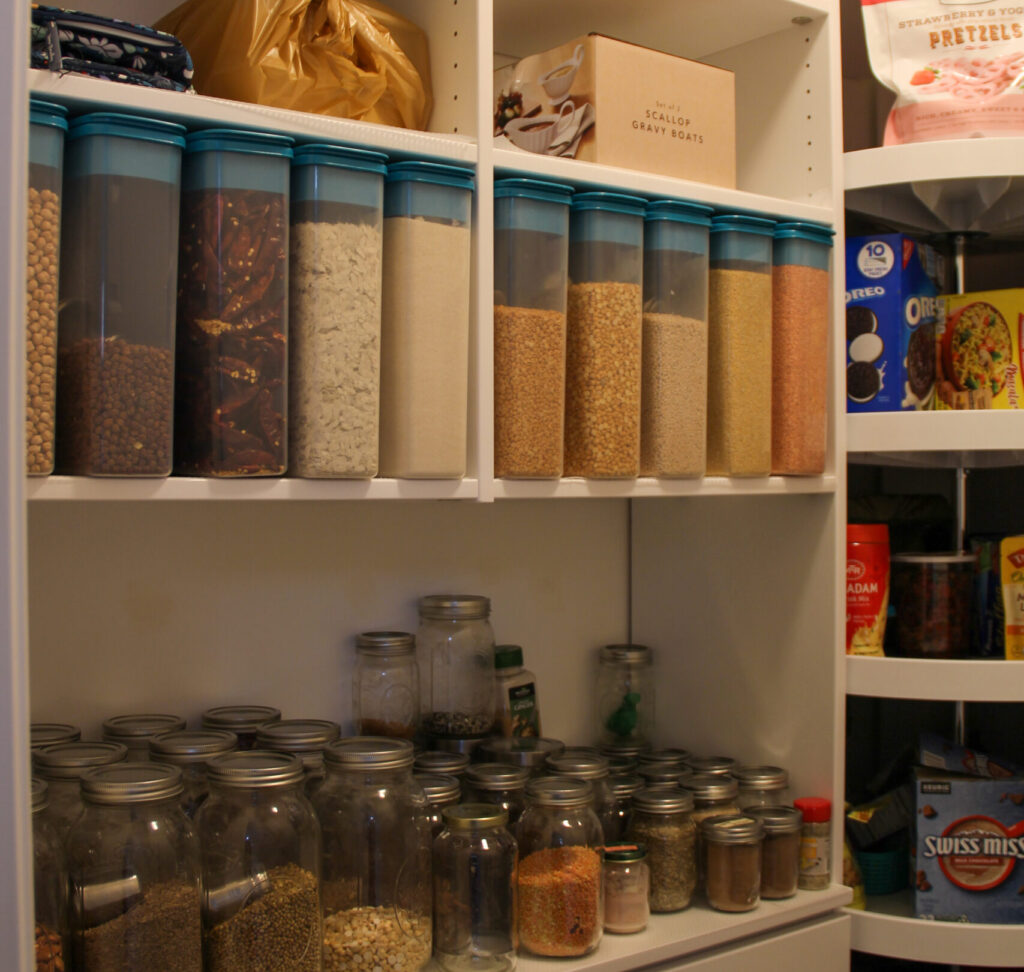
A pantry that handles bulk works like a small warehouse. Keep what you use daily at eye to waist height, and store unopened cases highest and lowest.
If you need inspiration for compact spaces, these reach-in pantry ideas show how to turn a narrow closet into a high-function setup.
Deep shelves can hide food, so use front-to-back bins that pull out like drawers. Choose full-extension pull-outs where possible, and size containers to match what you buy in bulk — not what looks pretty on social media.

For long term bulk food storage, aim for cool, dark, and dry conditions. Keep flour, sugar, and grains in airtight containers, and protect seldom-opened stock from light and humidity. Avoid stacking heavy cases on upper shelves where lifting is risky!
A simple rule helps: one open, one backup, the rest in overflow. If bulk items are displacing clothing or linens from primary closets, rebalancing with custom closets can free pantry real estate without sacrificing bedroom storage.
Large families or serious bulk buyers often need spillover space beyond the kitchen. A bulk storage rack belongs in a cool, accessible location with safe load ratings and anchoring; garages and utility rooms are common choices.
If you plan to store backstock near the car bay, consider garage storage solutions that combine heavy-duty racking with enclosed cabinetry, so cases stay clean and easy to reach.
Use this short list to launch your system in a single weekend.
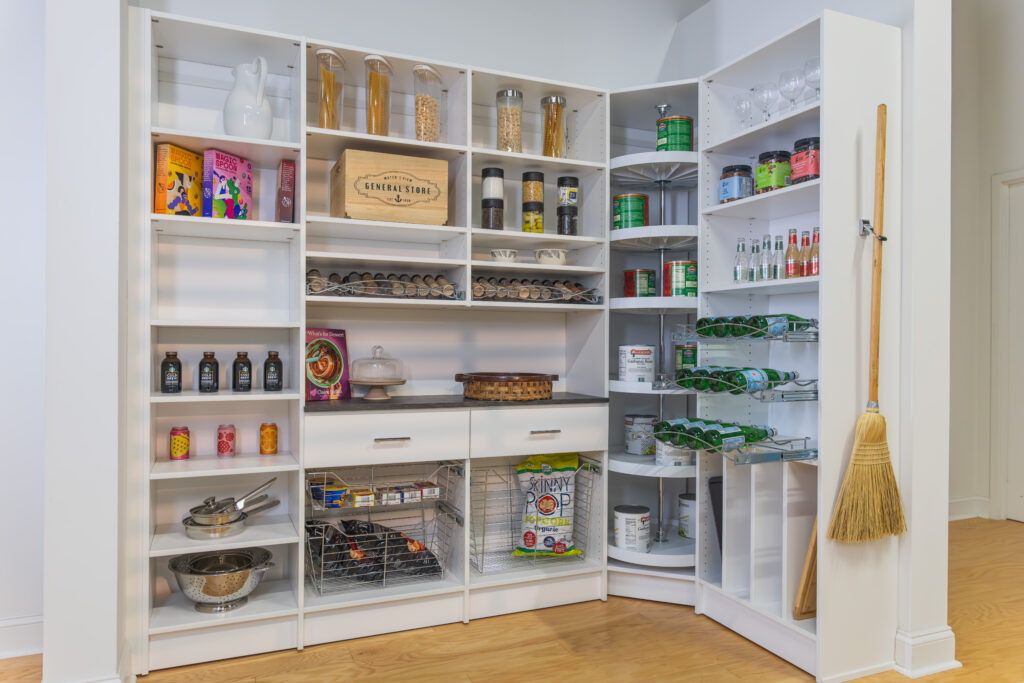
If your pantry is narrow, has deep corners, or shares space with small appliances, custom design solves the root problems. Adjustable shelves fit the tallest cereal boxes and paper towel towers. Full-extension drawers prevent lost items on deep shelves. Label rails and door-mounted racks convert dead space into productive storage.
That is why many bulk buyers explore custom home storage solutions for a walk-in or reach-in layout that reflects what they actually stock and how they cook.
Households that buy seasonal overstock or maintain emergency supplies sometimes need satellite zones. A secondary pantry shelf in a mudroom or a labeled cabinet in the basement keeps backstock near without being buried behind everything else.
If you end up relocating seldom-used linens or coats to gain pantry space, well-planned custom closets can absorb the shift without creating clutter elsewhere.
Ready to turn bulk hauls into a streamlined, low-waste pantry system that actually fits your life? Schedule a free design consultation with Renuity to plan zones, shelving, and containers tailored to your space, from the pantry to overflow areas.
Let us help you make sense of bulk buying chaos with intuitive custom home organization solutions, and look forward to making the most of your next weekend haul.
Costco and Sam’s Club are trademarks of their respective owners. Renuity is not affiliated with or endorsed by these brands.
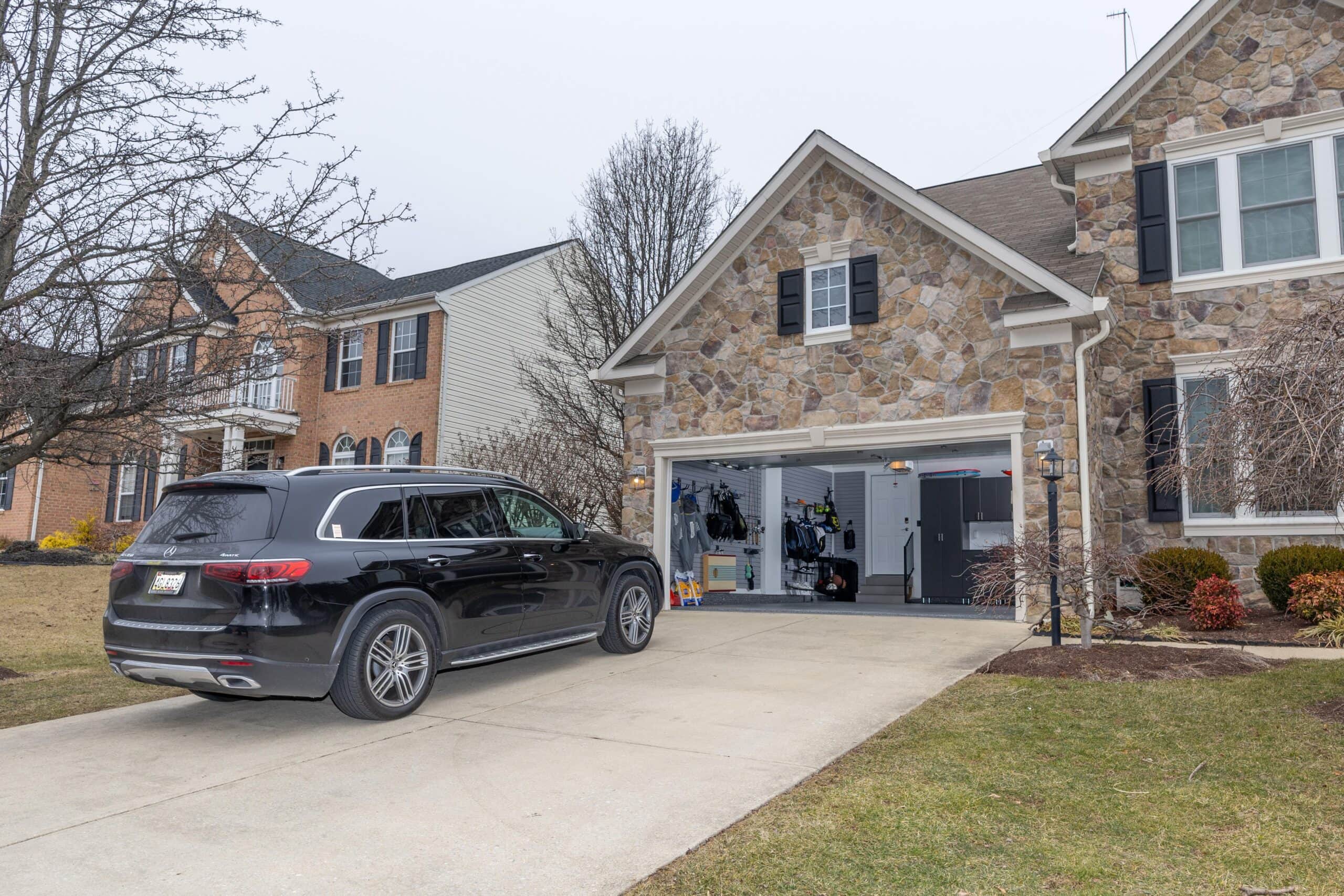


Renuity is backed by top industry ratings and trusted by homeowners nationwide for quality, service, and reliability.



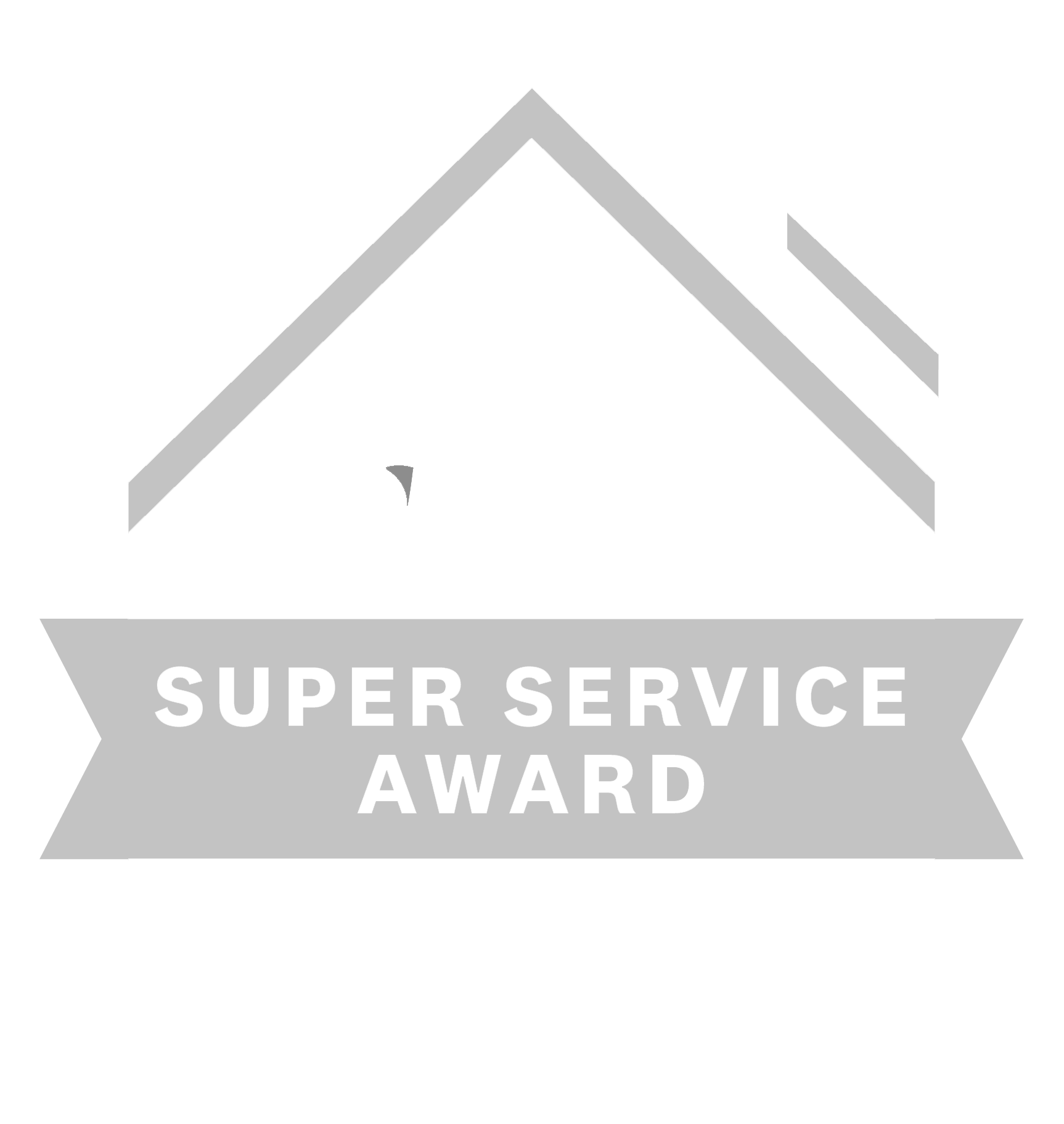
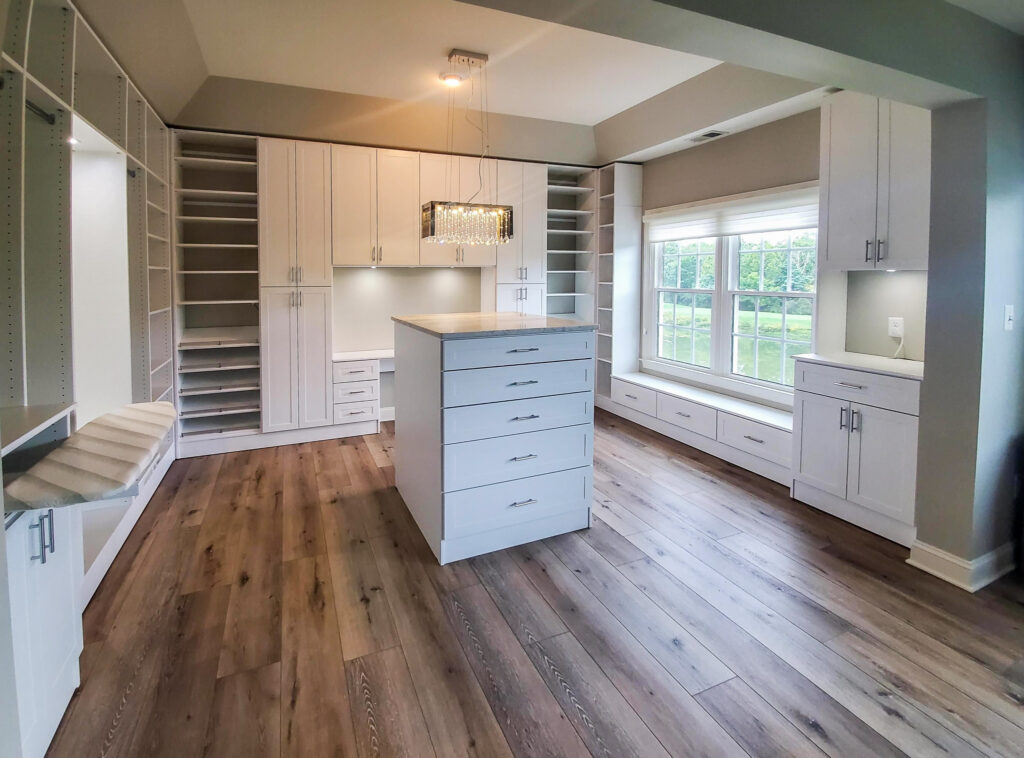
plus 12 months, no interest, no or low monthly payments
Claim Offer